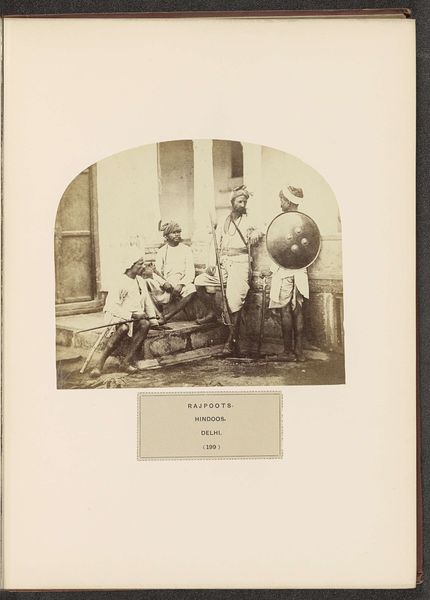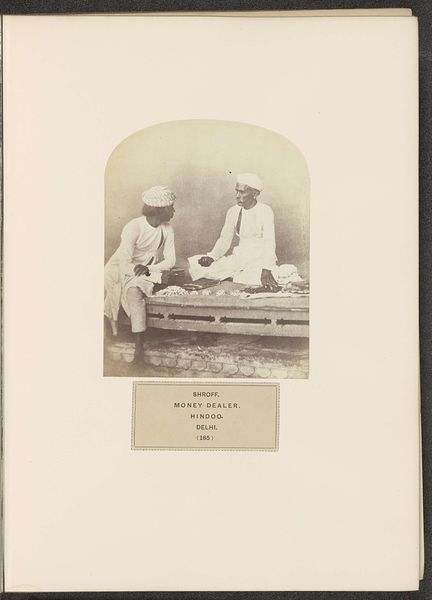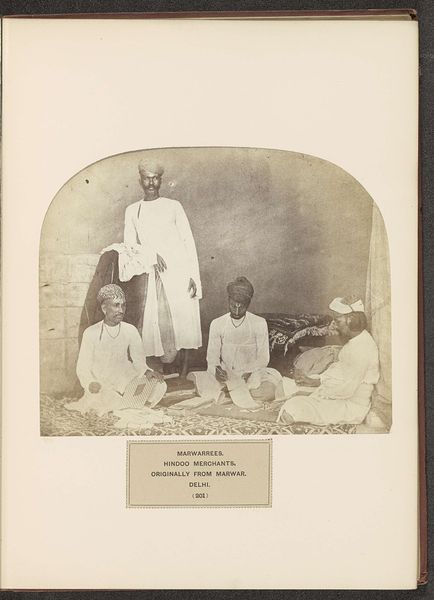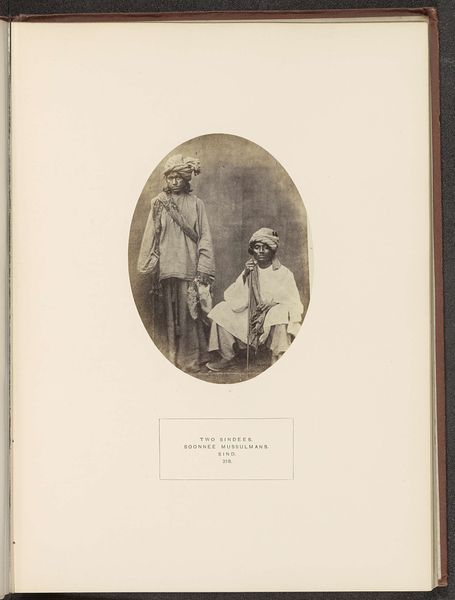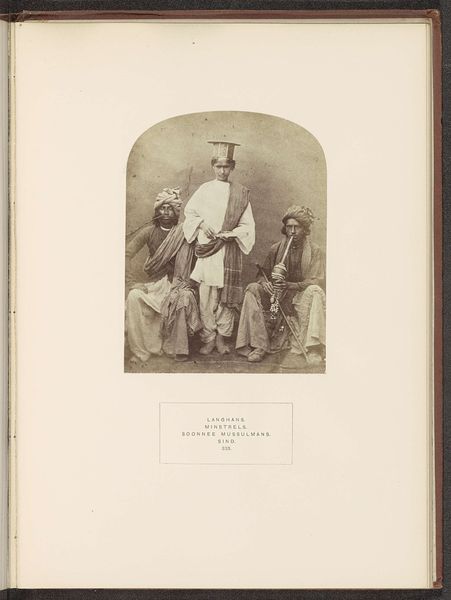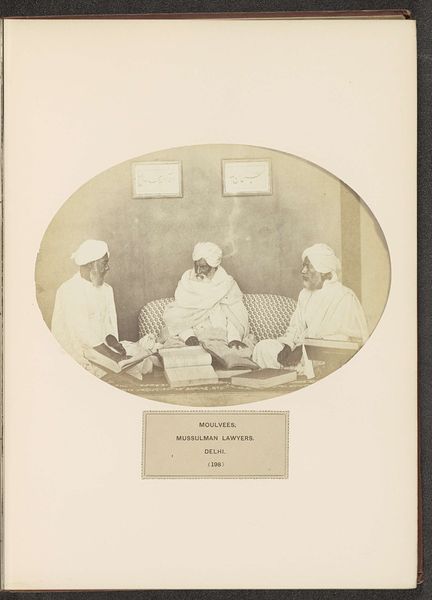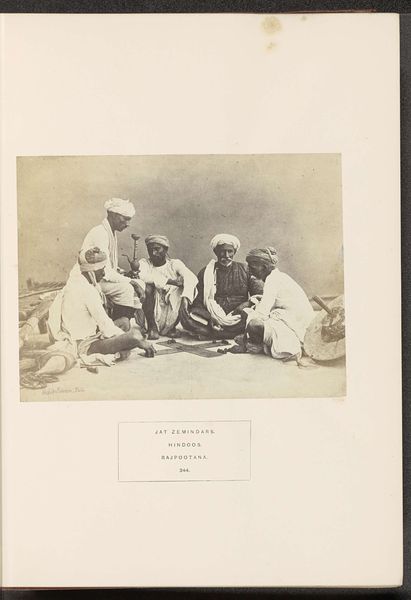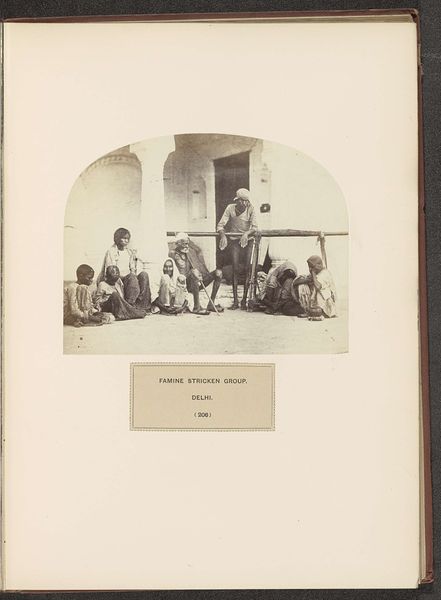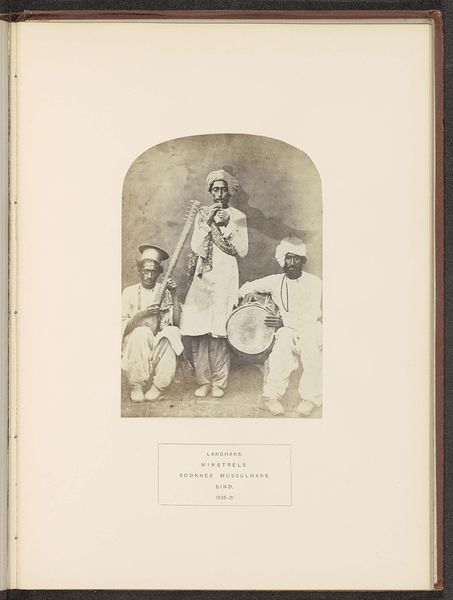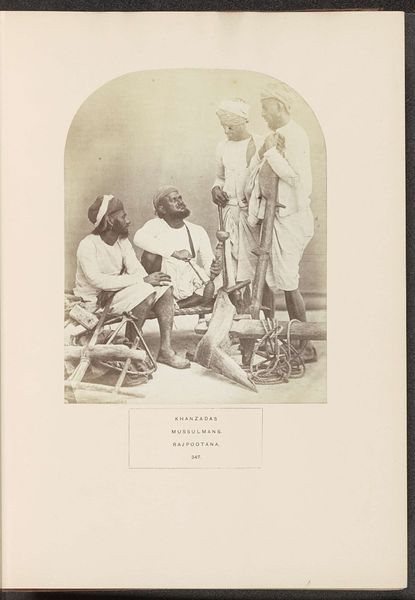
print, weaving, photography
#
portrait
# print
#
asian-art
#
weaving
#
photography
Dimensions: height 147 mm, width 167 mm
Copyright: Rijks Museum: Open Domain
Editor: This is a photograph entitled "Wevers van gouddraad aan het werk in Delhi," which translates to "Weavers of gold thread at work in Delhi," taken before 1869 by Shepherd & Robertson. It’s striking how much the neutral tones add a sense of solemnity to the image of these two men working. What symbols do you see in this image? Curator: I’m immediately drawn to the threads themselves. Notice how they reach upward, almost like aspirations. In many cultures, threads represent fate, destiny, the interconnectedness of life. The gold thread, specifically, could signify wealth, but also something far more profound: spiritual enlightenment or the weaving together of the earthly and divine realms. What do you think the act of weaving symbolizes in this context? Editor: I guess it goes beyond just creating fabric. Maybe it represents the construction of cultural identity or tradition, particularly in a place like Delhi, which has seen so much cultural exchange. Curator: Exactly! And consider the postures of the weavers. One is seated, seemingly the master, and the other kneels in what appears to be a supportive role. Think about the symbolism inherent in those power dynamics, the passing down of knowledge, the apprenticeship… Editor: So it’s not just about the finished product, but also the process, the people, and their relationships. Curator: Precisely. This image invites us to consider how deeply embedded symbols are in our everyday lives and in cultural practices. What are your final thoughts on it? Editor: I initially only saw an old photograph, but now I understand the threads, postures, and materials embody stories about tradition, knowledge, and cultural identity. Thanks so much. Curator: It's a great privilege to explore images such as this. They are profound cultural records, aren’t they?
Comments
No comments
Be the first to comment and join the conversation on the ultimate creative platform.
